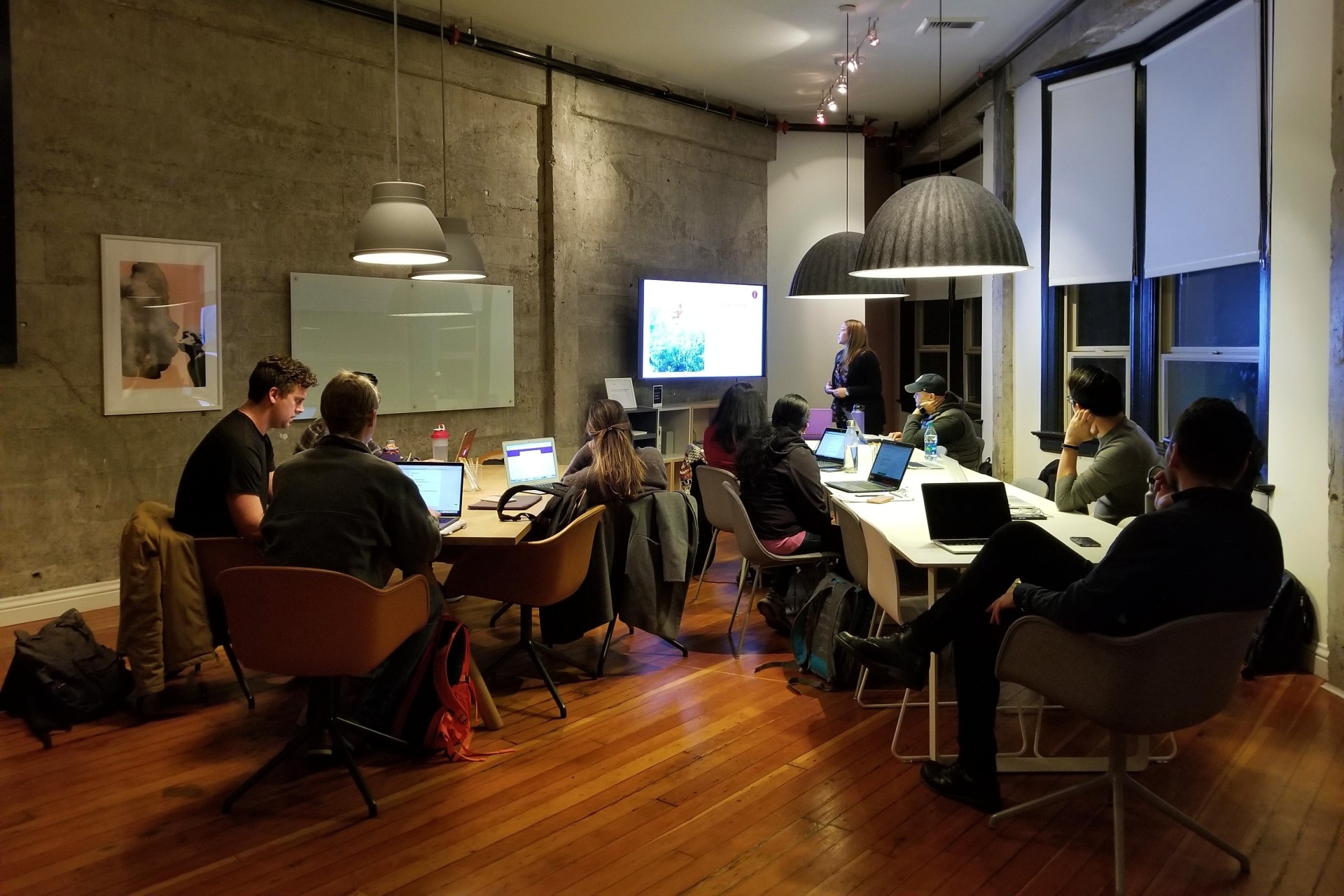

Traditional office settings aren’t for everyone. With more remote work on the rise, many are redesigning their workspaces to spark creativity and boost wellbeing. As such, the idea of working outdoors is a concept that trades fluorescent lights and stale air for fresh breezes and the calming sound of nature.
But how do you create a WFO environment that is effective and productive? With the help of this guide, you’ll be able to design your ideal outdoor workspace, allowing you to ditch the cubicle and embrace the great outdoors.
Why Work From Outside?
WFO offers many benefits beyond a change of scenery. According to studies, working outdoors can:
It’s a spark for problem-solving and creativity.
A number of studies have demonstrated the many cognitive benefits of simply going outside. These include better memory, greater creativity, and greater control over where our attention goes and for how long.
A study published in 2018 found that exposure to nature can help you solve problems more effectively. In another study, subjects exposed to natural environments demonstrated an increase in their ability to focus and complete mental tasks requiring a high concentration level.
More interesting? It has been shown that even hints of nature can lead to some of the advantages mentioned above.
Benefits of nature on the body.
Nature benefits not only your brain but also your body. By spending time outside, you can motivate yourself to become more active. Nature provides a beautiful backdrop for exercise, whether walking, biking, hiking, or kayaking. As a result of this increased activity, you can maintain a healthy weight or even lose weight.
Exercise, however, is not the only benefit. Nature has been shown to reduce stress hormones like cortisol, reduce blood pressure and heart rate, and ease muscle tension. As a result, heart disease risks can be reduced. As a bonus, being outside can boost your vitamin D levels, essential for bone, blood cells, and a healthy immune system.
Keeping your mental health in check.
Are you feeling anxious, stressed, or angry? Nature can be a powerful tool for managing these emotions.
Studies have shown that spending time outdoors significantly reduces anxiety and anger. Even though exercise in general can be beneficial, exercising outdoors has an added benefit. Additionally, green spaces are linked to reduced depression risk and improved concentration and attention.
Spending time outdoors can also improve your sleep since natural light regulates your sleep-wake cycle. Simply put, getting outside in the sun daily can help you sleep better at night.
Who is WFO right for?
An ideal fit for WFO is anyone who enjoys working in a nontraditional environment. In particular, though, it is beneficial for those who:
- You find traditional office environments stifling or monotonous.
- When working in a busy office, you have difficulty focusing.
- You feel stress or anxiety when you are cooped up indoors.
- You are active and want to incorporate movement into your workday.
Finding Your WFO Sanctuary
The beauty of WFO? Is flexibility. The following are some ideal outdoor workspace locations:
- Local parks. Parks sometimes offer Wi-Fi access, scenic views, and plenty of shade. As your base, look for picnic tables or benches.
- Coffee shops with outdoor seating. Coffee shops with outdoor seating areas and Wi-Fi are great options for getting a caffeine kick and changing scenery.
- Coworking spaces with outdoor areas. More and more coworking spaces are incorporating outdoor areas into their designs. In addition to offering a structured work environment, these spaces also allow you to get some fresh air.
- Your own backyard. Don’t forget your own outdoor sanctuary! Whether it’s a backyard, patio, or balcony, it can easily be transformed into a productive work area.
However, when selecting your WFO location, it is important to keep the following factors in mind:
- Accessibility. During your work hours, choose a location that is easily accessible. Factor in commute time (walking, biking, driving) to ensure you can maintain a regular schedule.
- Ambiance. Focus can be significantly affected by noise levels and visual distractions. Ideally, you should choose a location that combines tranquility and stimulation. For example, consider the presence of bird chirping or soothing water features. Whenever possible, stay away from areas where there is a lot of traffic or construction noise.
- Climate. Don’t exaggerate your local climate. Even though sunshine and mild temperatures are ideal, consider having a backup indoor workspace in case of extreme weather.
- Sun exposure. In addition to straining your eyes, direct sunlight can overheat your workspace. Apple, for example, recommends using its laptops between 50 and 95 degrees Fahrenheit or 10 to 35 degrees Celsius. As such, locate a location with natural shade, like a tree or an awning. You might also want to consider using a portable sunshade with limited shade.
- Comfort. If you decide to meet at a specific location, ensure comfortable seating arrangements. It may not be feasible to sit on a public park bench for extended periods of time. A portable ergonomic chair with back support might be a good investment.
- Legalities. When working in a public space, ensure laptops are permitted and noise restrictions are observed.
WFO Essentials: Equipping Your Outdoor Workspace
When you’ve identified your ideal WFO location, it’s time to collect the necessary equipment:
- Laptop stand. You can reduce neck and back strain by elevating your screen to an ergonomic height.
- Comfortable seating. Consider investing in a chair that offers good back support or a kneeling chair that promotes better posture.
- Weather protection. Depending on your location, you may need to carry an umbrella, a sunhat, or even a portable heater.
- Sunblock. Sunlight can provide many benefits, but you should protect yourself from sunburns. Whenever there is sunny weather in your area, you should use sunscreen. Working in shady areas or under a canopy may be helpful if sunscreen isn’t available.
- Connectivity. Make sure you have a strong and secure internet connection. When Wi-Fi is spotty, mobile hotspots or portable Wi-Fi routers can come in handy.
- External battery pack. When you work in locations without power outlets, an external battery pack keeps your laptop charged throughout the day.
- Anti-glare protectors. It can be challenging to use devices with screens when they are exposed to direct sunlight. Consider using anti-glare screen protectors for your devices so you can use them outdoors. Depending on your needs, these can be installed on laptops, smartphones, and tablets.
- Noise-cancelling headphones. Despite nature’s calming effects, ambient noise can be distracting. Noise-canceling headphones can make focusing easier.
- Weatherproof backpack. If you intend to use your backpack outdoors, ensure it is designed specifically for that purpose. Besides being water-resistant, it should have padded compartments for your laptop and other electronics and plenty of space for your WFO necessities.
- Insect repellent. In outdoor spaces, you may encounter some aspects of nature, such as insects. To keep insects away, use insect repellent or traps. If they continue to be a problem, consider using physical mesh nets or screens in your workplace.
- Hydration pack. The importance of staying hydrated outdoors cannot be overstated. You can easily access water throughout the day when you carry a hydration pack.
Optimizing Your WFO Experience: Tips for Success
For a productive and enjoyable WFO experience, follow these tips:
- Plan your workday. If you need to concentrate on a task, choose a time when there are fewer distractions and when you are most productive. Throughout the day, take short walks — stretch, and block out times to check your emails.
- Mind the sun. Although sunlight is beneficial, too much direct exposure can be uncomfortable and strain your eyes. As the day progresses, adjust your position or use a sunshade.
- Keep an eye on the weather. Before heading out, check the weather forecast. You may have to adjust your location or workday if the weather changes.
- Dress for comfort and function. To adapt to changing temperatures, layer your clothing. Consider wearing sun-protective, breathable fabrics.
- Stay organized. Keep your workspace clutter-free by investing in a portable organizer for your laptop, chargers, pens, and notebooks.
- Maintain a clean workspace. It is imperative to keep the area clean to prevent spills and insect infestations. Keep sanitizing wipes and a small trash bag on hand for waste disposal.
- Maintain good posture. Even while sitting in an ergonomic chair, it is important to maintain good posture. Set reminders throughout the day to adjust your seating position.
- Embrace the breaks. To refocus, take short walks or do mindful breathing exercises during breaks.
The WFO Lifestyle: A Sustainable Choice
It’s not just about aesthetics with a WFO lifestyle; it’s also about sustainability.
- Reduced commute. You can significantly reduce your carbon footprint by eliminating your daily commute.
- Lower energy consumption. When you work outdoors, you don’t have to use artificial lighting or climate control.
- Connection with nature. Getting outside fosters a connection with nature and encourages eco-conscious behavior.
Conclusion: Escape the Ordinary
You can transform your workday from a tedious routine into a refreshing and invigorating experience when working outdoors. Using the right equipment and planning, you can create a productive and enjoyable WFO setup that allows you to embrace the beauty of nature while thriving.
So, what are you waiting for? Get outside, breathe fresh air, and discover the power of a Work-From-Outdoors lifestyle.
FAQs
Where should I set up my WFO space?
A good location will have good WiFi signals, shade (think: trees, umbrellas, or awnings), and a comfortable temperature. You can choose from several options, including your balcony, patio, and backyard.
What kind of furniture do I need?
There is no substitute for a sturdy table and a supportive, comfortable chair. Consider a folding table and chair set if you want to store and set up your table and chairs easily.
How can I make my WFO space more comfortable?
Add ergonomic features, such as a stand for your laptop and a cushion that you can sit on. You can create a pleasant ambiance by using plants, throws, and string lights.
Is there a way to stay connected while I’m outdoors?
You should check the WiFi signal strength at your chosen location. If it is not strong enough, an extender may be necessary.
How can I protect my electronics from the elements?
When your laptop is not in use, ensure it is in a weatherproof case and closed. It is also possible to reduce glare by using a portable sunshade.
What if there are distractions outside?
Use noise-canceling headphones to block out unwanted sounds. To minimize interruptions, let colleagues know your WFO schedule.
How can I stay focused while working outdoors?
When working outdoors, choose tasks that do not require intense concentration. During breaks, move around and breathe fresh air.
Image Credit: Ketut Subiyanto; Pexels











John Hall
John Hall is the co-founder of Calendar a scheduling and time management app. He’s also a keynote speaker that you can book at http://www.johnhallspeaking.com.